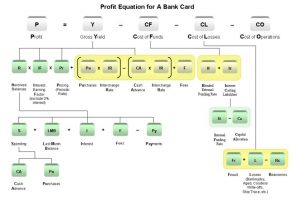Marketing and sales are the tip of the spear in any organization’s mission to grow or retain customers.
And whether you’re selling a commodity or highly differentiated product, marketing and sales are driven by demand. To enable a sustainable strategy and build enterprise value, you’ll need to find, win, keep and grow customers who create that demand.
There are a couple of frameworks than can help you align your organization around these principles. They include:
*The 4 P’s of marketing (product, pricing, promotion and physical distribution or place), a “push” approach.
*The value discipline model, which identifies three core areas of interest: product, service and operational efficiency/effectiveness. This is more of a “pull” approach. The idea is to exceed industry expectations in one value discipline while meeting the standard in the other two.
With both frameworks, the goals is to create breakthrough messaging that garners attention, motivates interest, creates desire, and results in a response based on a call to action. Whether using a push or pull approach for advertising and promotion, the communication must be relevant to the audience.
These proven structures work well for small individually owned businesses and startups. But for larger organizations, the challenge is that they’re perceived as too narrow in their focus––making it difficult to align an entire company around traditional small-bore marketing models.
To meet the needs of larger organizations, Convergence Group created a more encompassing tool called Equation Marketing. It’s derived from the TUP model used within the package goods industry. The TUP model posits that volume is driven by three key metrics: trial rate, user rate and package rate. Rendered mathematically:
V = T x U x P
(Volume = Trial Rate x User Rate x Package Rate)
Convergence Group created Equation Marketing by widening the focus of the TUP framework. We identify drivers of profitability and align initiatives across an organization to focus on those drivers.
Using this formula, we can apply key metrics and critical success factors throughout an entire organization, focusing on sub-equations for specific departments or functions. Once the levers that drive initiatives are identified, management can prioritize them based on how much value each one contributes, compared to other initiatives, and how easily they can be implemented.
Here’s an example of how the Equation Marketing model might be deployed in the credit card industry. Note how the chart includes the specific sub-equations within the organization. The industry-specific terminology can easily be replaced with other, more relevant drivers.
This framework offers several benefits:
*Keeps the focus on process and customer treatments that drive earnings while promoting efficiency and effectiveness.
*Harmonizes human capital, providing a route map that enables people to see where they fit in to the larger picture and their relative contribution.
*Serves as a common language across the organization providing a unity of purpose and an understanding of progress.
*Infinitely adaptable across and within a wide range of industries and departments simply by defining key drivers appropriately.
Convergence Group’s Equation Marketing framework has helped many of our clients achieve impressive results. Call us at 302.234.4901 or email us today to explore how we can help you.



